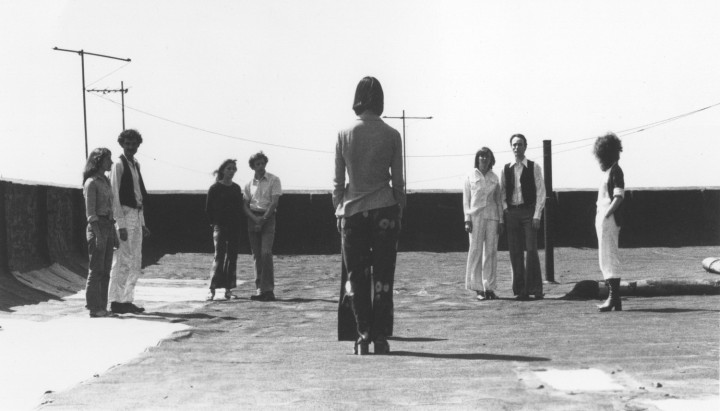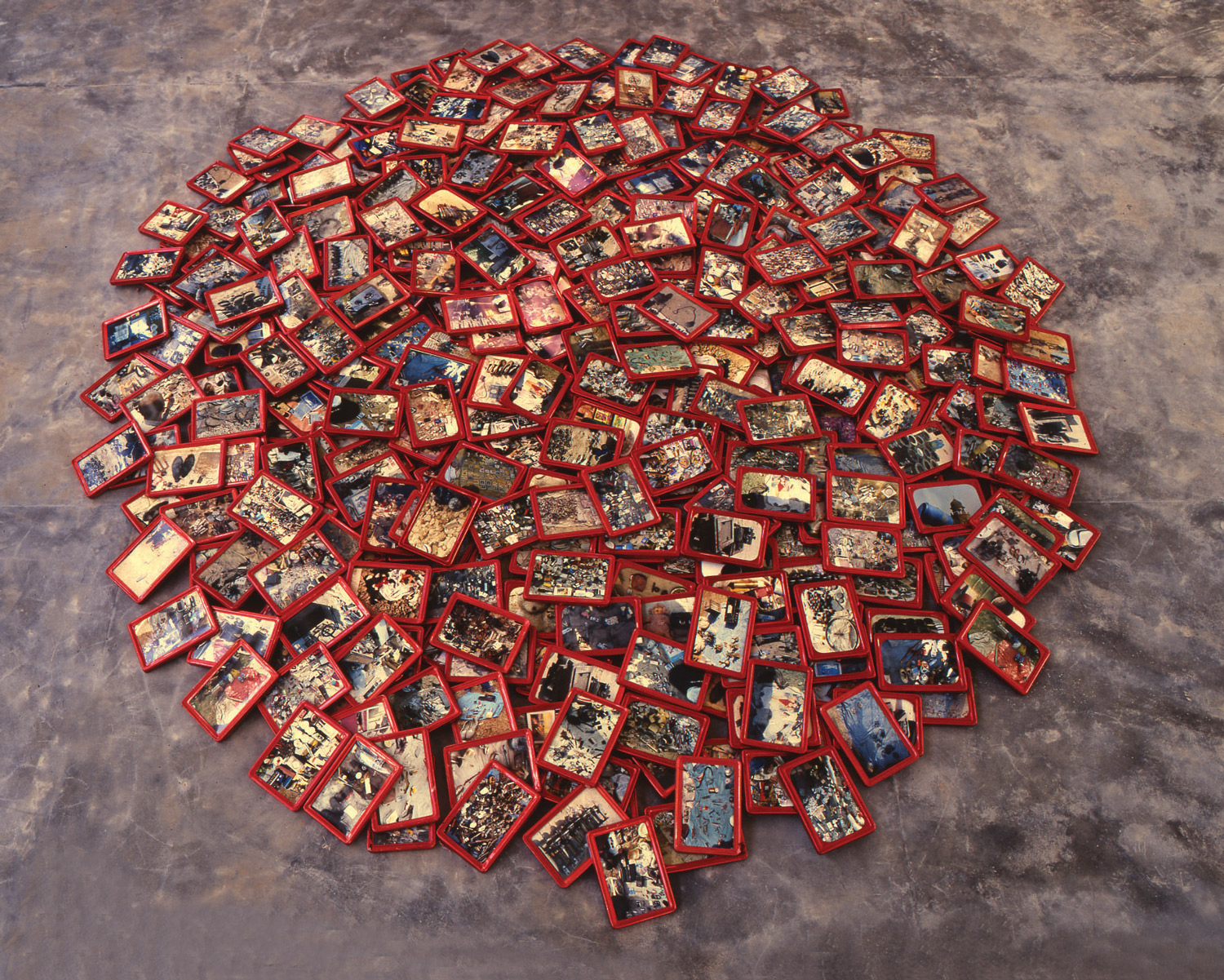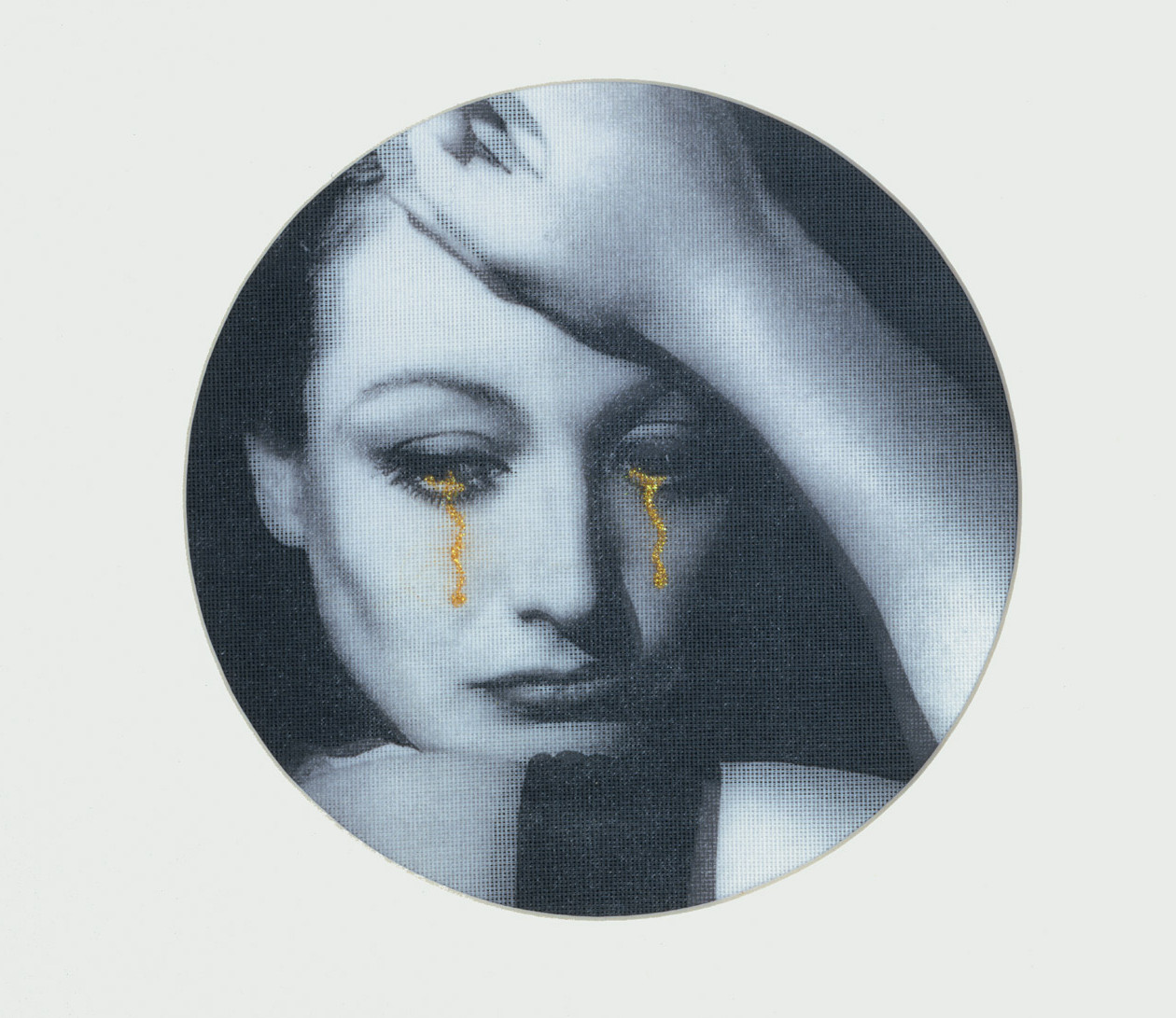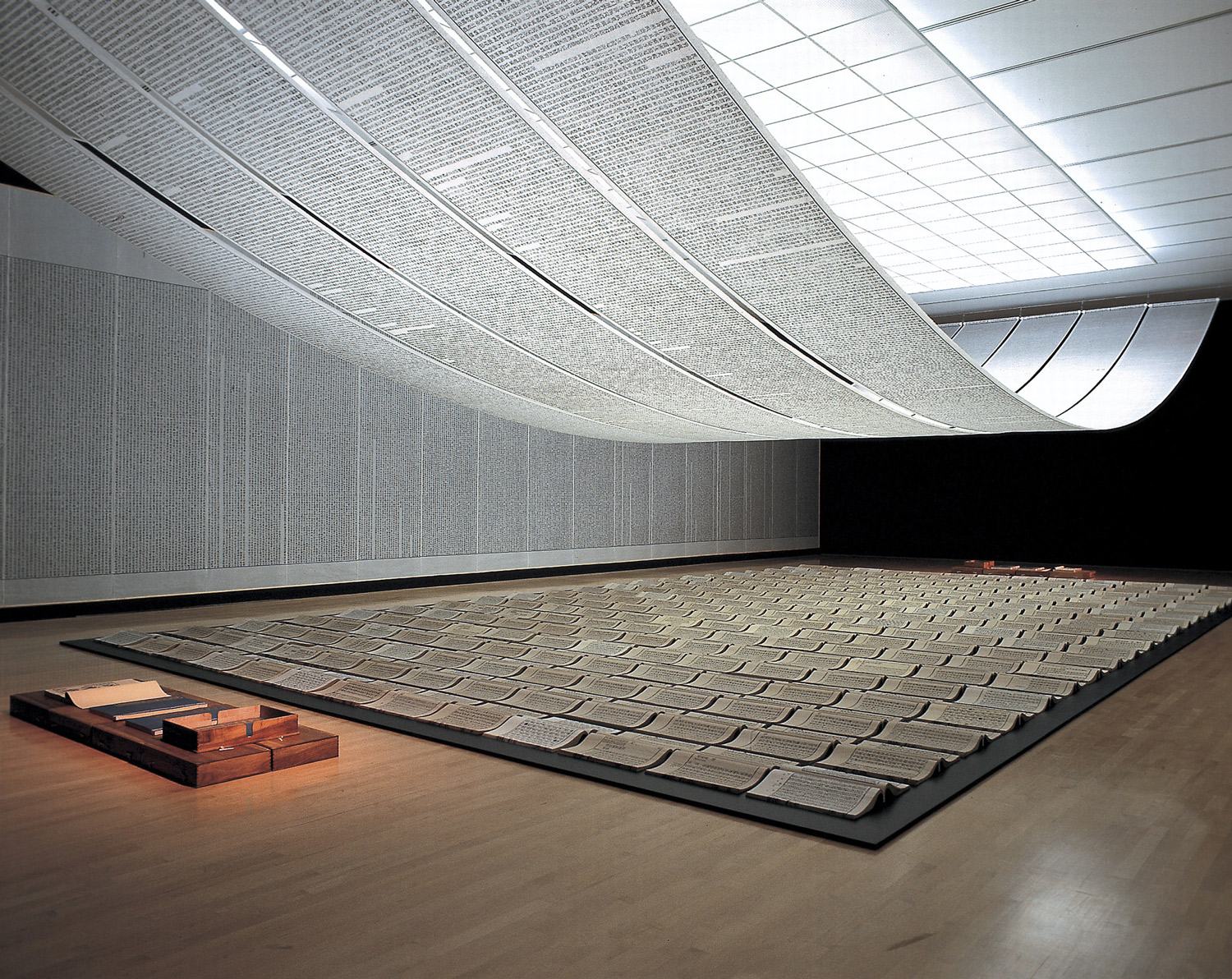
Lina Bertucci: You’ve been working as an experimental filmmaker since the ’70s. You have an incredible breadth and range of work as a cinematographer, filmmaker, photographer and writer. You shot works by Yvonne Rainer and Trisha Brown and the whole performance scene of the ’70s. Your first narrative film, What Maisie Knew, shot in 1974, was very much influenced by that scene. You were the director of photography for the seminal works of Chantal Akerman and the filmmaker of Marina Abramovic’s Seven Easy Pieces (2007), shown at the Guggenheim in 2005. Tell me, what link do you see in your practice?
Babette Mangolte: Most of my early work in film as well as photography is a self-examination of what it means to be a spectator. In my first film, What Maisie Knew, I was very influenced by the dance performance in the mold of Yvonne Rainer. But Maisie was also, for me, an experiment in narrative filmmaking. The film has practically no dialogue, and is made of set situations that repeat, evolve and change. Narrative is that evolution: you start somewhere and finish somewhere else. The film spectator constructs the narration.
LB: So there’s a shift between narrative and the idea of spectatorship?
BM: Yes. The two feed on each other. In many ways everything I’ve done in performance, including my latest film of Marina Abramovic’s Seven Easy Pieces, is about how you look at what you see and how being a spectator is at the core of performance as an art form. Marina has the star power of someone who has the ‘presence’ of an actor, that’s what I wanted to highlight in the film of Seven Easy Pieces. We are mesmerized by what she does, not by what she incarnates.
LB: You said you wanted to make a film that was not just a documentary of a performance.
BM: Yes. The film is self-reflexive about what is performance. It is not theater, especially the kind of performance Marina has been involved with and what she was restaging of Bruce Nauman, Vito Acconci, Valie Export, Gina Pane and Joseph Beuys… It is really abstract. The abstraction comes from the fact that the body is put to task and is less about what the body has to suffer but how it can endure.
LB: How did you approach shooting Marina’s Seven Easy Pieces?
BM: I studied Marina before I shot the film. I observed how her performance changed from day to day. She told me… I never know exactly what I’m going to do, I can’t be controlled. Then I felt that I needed to find a shooting strategy that could accommodate her unpredictability.
LB: There is a very visceral feeling in the film, a sense of being right there in the space. What contributes to that?
BM: You engage people through the senses. If you have an image with very little happening and something is going on in the sound — your attention goes to the sound and it makes you feel that you are in the middle of the space. Sound helps us to see and guides attention as to what to see in an image. It’s not intellectual at all.
LB: Do you share similarities in sensibilities?
BM: I am very instinctive as a filmmaker.
I’m a lot like Marina in that sense. I don’t always know when I make a camera move.
You have to train yourself and shoot constantly to keep yourself fit to improvise. And I really shot every day, film or still photographs, for about 10 years in the ’70s. That’s great preparation to develop your instincts.

LB: I read you spent weeks observing Trisha Brown rehearse before you shot Water Motor. Yvonne Rainer said “it was one of the best dance films ever made.” You shot two takes, one in real time and one in slow motion. Somehow we are awestruck by what we are seeing — by what we missed the first time around.
BM: Trisha Brown is an inventor of movement… It’s clear that the cinematography of her dance has to reflect that invention. You have to know the material that you shoot. You have to conceptualize what you are going to film prior to filming. You are not just in reactive mode as in still photography.
LB: All this work that you’ve done in the ’70s is so contemporary. There is that keen sense of looking in all your films.
BM: Looking is my subject. I think that is the reason I started with a film like Maisie, exploring the subjectivity of somebody looking. Marina’s film is different from my first films but there is that same sense of eccentricity in terms of rhythm. It is unpredictable and that is why you have a sense of being right in the middle of it. It is the opposite of a film that relies on you being familiar with the material.
LB: Did you write a script for Maisie?
BM: I had no script. I just had the idea of the girl Maisie and I knew well the Henry James’s novel. I started with one principle of having 5 women seen in different situations, many implying sexual exchanges that could not be comprehended by a child.
LB: It is shot from the point of view of a child but we never see the child. The child is what the film camera sees.
BM: I felt that the subjectivity of the child permitted me to be looking at something with the kind of astonished bewilderment of someone that doesn’t understand what he was looking at. At first you have the sense that somebody is called Maisie, and at the end you understand that Maisie is a child, she is hiding in the closet in the last scene. The closet door is shut and that is the end.
LB: Your second film, The Camera: Je, La Camera: I, was more analytical.
BM: Yes, I try to use the film camera to give to the film spectator the experience of what it is to take still photographs. I focused on those slight differences in expression that motivates you to take the photograph or not to take it — to wait a second, 10 seconds.
LB: As a photographer and spectator, I was totally engaged in that shooting session. You really felt like you were in real time.
BM: You are perfectly right. Real time has always been an important element in my films. Obviously it’s key to the success and interest of Jeanne Dielman, the film I shot for Chantal Akerman in 1975. The sense of real time was really important. I don’t take credit for it. It is what the ’70s gave us, the post John Cage influence, it’s not from nowhere. For me it comes from New York.
LB: Jeanne Dielman, 23 quai du Commerce, 1080 Bruxelles took a very radical feminist approach. Not a lot of editing, no close-ups, only wide shots and long takes. Was that clear from the beginning?
BM: When I did the storyboard with Chantal the weeks preceding the shooting, it was clear what film it had to be. It’s a women’s film, women looking at what women do, cooking or cleaning or just being with those simple gestures. In Chantal’s first interview after the film she comments on the desire to give nobility to gestures that nobody thought anything about before. That was the intent. It’s the idea of looking at what people had never looked at before. I still feel informed by this concept of revealing new perceptions.
LB: Jeanne Dielman is a masterpiece and forerunner of that sensibility.
BM: Chantal was very clear about the character, and the character had nothing to do with who Delphine Seyrig was, who plays Jeanne Dielman.
Really the opposite of Bresson who cast somebody who looked the part in order to shape that person as if they were clay so he could do with them what he wished. In a film you need to have the stylization of a certain distance, Chantal knew that. Film is not realism. It’s not neorealism. Delphine was perfect for the role: first she was a great actress and she had the intelligence of knowing how you communicated the drama, the unfolding and break down of a woman.
It’s not melodrama, it’s a woman who is unsettled and falling apart.

LB: Were you and Chantal actively involved in the feminist movement?
BM: Feminism was very important. Exploring a woman’s perspective had a sense of urgency in the ’70s. It was really clear to all of us.
LB: It was a three-hour film, no?
BM: Three hours and 17 minutes.
LB: We see Jeanne Dielman loose her equilibrium, prostitution and the eventual murder of her client and her breakdown.
BM: It was obvious in the script that sexuality was key to the psychological transformation, and the going off kilter of the character of Jeanne Dielman.
LB: Did you and Chantal know that it was going to be such an important film?
BM: I knew Chantal was very happy with it. It went to Cannes in 1975. It got a write up in Le Monde on the front page, which was unheard of. I saw it a year later at MoMA in 1976 and I was amazed. It was really great.
I felt than that the film was bigger than all of us.
LB: When did Bresson become an influence for you?
BM: Much later in the late ’90s when I worked on my film Les Modèles De Pickpocket (2003), re-tracing those non-actors who played in Pickpocket from 1959.
LB: Is the minimalist approach of Bresson, in relationship to what was going on with the whole performance scene of the ’70s, similar in approach to gesture and time?
BM: Bresson is very conceptual in his approach to filmmaking. He is minimalist but also classical. It is the opposite of genre film and not easily classified. He had that philosophy of the model, which is not an actor. Bresson felt everything had to stay inside. Film is about interiority. If you’re expressive, it’s not authentic.
LB: You had a show in New York last June 2007 at Gallery Broadway 1602. What did you show? Early works from the ’70s?
BM: It was a mix of some of my early photographs that were never shown and projected film fragments that contextualize the period.
LB: And you showed Water Motor, 1978. This really has amazed audiences today; it is so seemingly simple — a masterful work.





